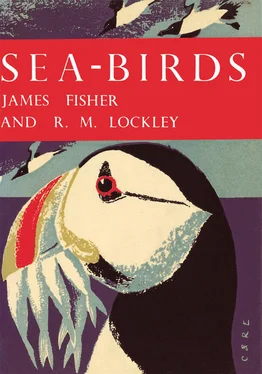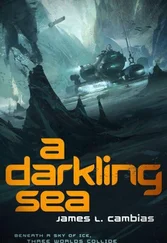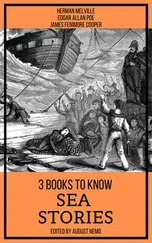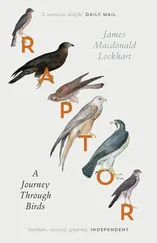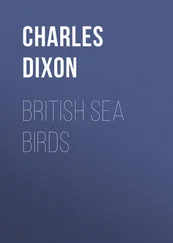One hundred and ninety-one miles west of St. Kilda, and about three hundred miles from the mainland of Scotland, lies a tiny rock which has been a magnet for us both—not only because of its bird-problems, but because it is a tiny remote rock! Fisher flew over Rockall in 1947. In 1948 Lockley spent twelve days in a trawler fishing within sight of, and on occasion very close to it. In 1949 Fisher sailed there in H. G. Hasler’s sixteen-ton yawl Petula , and spent some time investigating it at close quarters.
One of us has visited Sule Stack, the lonely gannetry thirty miles west of Orkney; and we have enjoyed nearly every island, from North to South Ronaldsay, from Eynhallow to Hoy, and have seen sea-birds in a great range of surroundings. Neither of us is a stranger to the well-named Fair Isle, a great migration and sea-bird station. We know the Shetland gannetries of Noss and Hermaness, where thousands nest—though forty years ago there was none. We have stood at the top of Foula’s Kame, and gazed twelve hundred and twenty feet to the auk-scattered sea below. We have sailed in and out, and round about, the stacks and rocks and skerries, and voes and geos of straggling Shetland, and seen many a fine cliff, from Sumburgh in the south to Saxa Vord in the north; from Noss on east to Papa Stour on west. We are no strangers to Fitful Head, or Hillswick, or Ronas Voe, or Burra Firth; or to Hascosay, the bonny isle of Whalsay, Fetlar, Bressay or Mousa; or to the Out Skerries, nearest British land to Norway.
Perhaps in Ireland we have not seen all we should; but one of us knows the windy corner of Kerry, the end of the world, where the pure Irish survives on the Blasket, and where the fulmars now glide and play round Inishtearaght, Inish-na-Bro, and Inishvickillaun; and where the gannets mass white on the serrated pinnacles of the Little Skellig, second gannetry of the world. He knows, too, the little gannetry of the Bull, and its neighbour the Cow, and other crags of Cork from Cape Clear Island and Dursey Island east to Great Newtown Head. In Clare the cliffs of Moher bring sea-birds to nest among many beautiful flowers. We have seen the bird-colony of the Great Saltee in Wexford, and that of Lambay not far from Dublin. One of us knows the many fine, high cliffs of Mayo and Sligo, and some headlands of the maze-coast of Donegal; the other has watched fulmars haunting the curious inland cliffs of Binevenagh in Derry, and hunted out the basalt coast of Antrim and the Giant’s Causeway.
Between us, then, we have seen much of the coast of our glorious islands; but we have not seen nearly enough, and we hope to see what we have already seen, all over again. And we would see the west side of the ocean we have grown to love, and compare it with the Britain we know, and other sea-bird countries we have seen—the tuff and lava and basalt of Iceland, the basalt crags of Faeroe, the dissected plateaux of Spitsbergen, the misty cliffs of Bear Island, the drowned coast of Norway with snow-coated Lofotens and dark fjords like corridors, the friendly limestone of Sweden’s Gotland, the skerry-guard of Stockholm and Uppland, the dunes of Denmark and the Dutch islands, the red sandstone cliffs of Heligoland (the only cliffs in western Germany), the chalk and granite of north France, and the islets of Brittany; the benign, sunny slopes and little scarp-precipices of the Channel Islands where one of us lived for a while; the warm, shearwater islands of the Portuguese Berlengas, the Madeiran Desertas, and the Salvages; and the gulleries and terneries of the Camargue, within the Mediterranean.
This book is not a comprehensive survey of a problem based upon a lifetime’s experience nor yet a full bibliographical compilation. We have paused in field-work simply to offer this book as a stimulant, which we hope very much it will be. We intend it as no more. It is a statement of some of the facts concerning the wonderful sea-birds of the North Atlantic, and of some of the interesting problems connected with their lives and their evolution. It is intended to exhibit the ignorance of ornithology as much as its knowledge, and to draw attention to what needs doing as much as to what has been done. It is our wish, we must also add, not only to take the reader with us—if he will come—to the east side of the North Atlantic where the sea-birds are more in our personal experience, but also to the western seaboard, which is zealously worked by the ornithologists of the United States and Canada and described by them with such enthusiasm and thoroughness in numerous books and journals. One of us has corrected the galley proofs of this book in an aircraft bound for North America, on the beginning of a journey among the sea-birds of that continent; as he left Britain, Ailsa Craig flashed white with gannets in an April evening sun, and the first bird he saw in the New World, through Newfoundland clouds next morning, was a gannet.
For help, encouragement and information we have more friends to thank than we can mention. Our search of the literature has been chiefly pursued in books belonging to the Zoological Society of London, the Alexander Library at Oxford, the Royal Geographical Society and the London Library, and we thank G. B. Stratton and W. B. Alexander particularly. Among those who have given us valuable help or information (they have no responsibility for the use we have made of it) are B. M. Arnold, R. Atkinson, J. Buxton, T. Cade, F. Darling, E. A. G. Duffey, A. Ferguson, Finnur Guðmundsson, H. G. Hasler, P. A. D. Hollom, J. S. Huxley, the late P. Jespersen, G. T. Kay, Miss J. Keighley, T. C. Lethbridge, H. F. Lewis, C.–F. Lundevall, S. Marchant, R. C. Murphy, E. M. Nicholson, R. S. Palmer, R. Perry, R. T. Peterson, L. E. Richdale, M. Romer, F. Salomonsen, H. N. Southern, D. Surrey-Dane, N. Tinbergen, L. Tuck, L. S. V. Venables, H. G. Vevers, K. Williamson and V. C. Wynne-Edwards. Mrs. E. Marshall patiently typed several drafts of most of this book. J. F. Trotter prepared the final copies of most of the maps. One of these is on a mapnet invented by the late Professor C. B. Fawcett and is used with his permission and that of the Royal Geographical Society (e.g. Fig. 24). Another mapnet, devised by one of us (J.F.) is used for the first time in this book; it is based on the South Pole with the oceans in three petals, and is useful for showing the range of the many sea-birds that have a primarily southern distribution (e.g. Fig. 22). J. Fisher’s fellow New Naturalist editors have been encouraging; and Eric Hosking in particular has found us many unique photographs. R. Trevelyan, of Messrs. Collins, has been most ingenious and helpful. The American Ornithologists’ Union, who published our frontispiece first in the Auk , have very kindly allowed us the use of it; this fine painting by Roger Peterson of the interesting cahow, long thought to be extinct, embellished the paper by R. C. Murphy and L. S. Mowbray on their recent rediscovery of its breeding-grounds.
Ornithologists’ wives do many (if not most) of the chores that husbands normally do. We thank ours for more things than they probably remember.
JAMES FISHER
R. M. LOCKLEY
CHAPTER 1THE NORTH ATLANTIC OCEAN ITS STRUCTURE AND ITS SEA-BIRDS

THE ATLANTIC OCEAN is a big broad blind alley, kinked like a zig-zag, its jagged north end blocked with ice, its broader south butt cornered by the cold stormy narrow eastern entrance to the Pacific Ocean, and by the warm, windy and wide western gate to the Indian Ocean. It resembles two wedges, their apexes towards the North Pole, one of them truncated midway and at that point connected sideways to the base of the other.
Читать дальше
